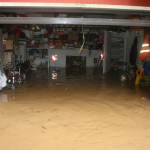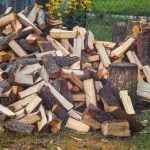The Quick Action Checklist for Home Disasters

When disaster strikes at home, it rarely sends an invitation first. Whether it’s a burst pipe, a fallen tree, or sudden smoke filling the kitchen, quick thinking can make the difference between a minor inconvenience and a full-blown emergency. Most homeowners don’t plan for chaos—but those who do often save themselves thousands in repairs and endless stress. Below is a practical checklist that helps you stay calm, take control, and minimise damage when unexpected problems hit.
Stay Calm and Assess the Situation
The first few moments after discovering a problem are crucial. Take a deep breath and quickly gauge the seriousness of what’s happening. Is anyone hurt? Is there an immediate danger like fire, gas, or live electricity? If it’s safe, switch off the main power or water supply as needed. Knowing where these shut-off points are located before disaster strikes will save precious seconds later. In situations like flooding, don’t wade through standing water until you’re sure it’s not in contact with electricity—safety comes before saving belongings. If major water damage occurs, you may need professional flood damage restoration to prevent long-term issues like mould or structural decay.
Stop the Source of the Problem
Once everyone’s safe, focus on stopping the source. For plumbing issues, turn off the water main. For electrical problems, cut power at the switchboard. If a storm has blown a branch through a window, close off the room and safely remove any hazards. Small, decisive actions can prevent a situation from escalating. Keep basic tools and supplies handy—torch, gloves, tape, buckets, towels, a wrench for water valves, and a charged power bank. A little preparation now means faster problem-solving later.
Document Everything
It’s easy to forget this step in the rush, but it’s one of the most important for insurance claims. Take photos or short videos of the damage as soon as possible—before cleaning or moving items. Note the date and time, and include wide shots for context. This evidence helps you get reimbursed faster and protects you from disputes over what was lost or damaged. It’s also wise to store copies of receipts for home improvements or valuable items in a cloud folder—handy proof for future claims.
Contain the Damage
If you can’t stop the issue immediately, try to contain it. Block leaks with towels or buckets, move valuables to a dry spot, and open windows for ventilation after smoke or water exposure. For broken windows, tape or cover them with plastic sheeting until repairs can be made. Avoid using damaged electrical sockets or appliances until a licensed professional checks them. Acting quickly reduces secondary problems like dampness, mildew, and pests.
Call in the Right Professionals
Not every disaster needs an emergency response team, but knowing who to call is vital. Keep a short contact list handy, including your insurer, plumber, electrician, and local emergency services. When choosing tradespeople, look for specialists experienced in your specific issue. For instance, if water has soaked into walls or flooring, restoration experts can dry and dehumidify areas that DIY methods can’t reach. Similarly, a licensed electrician should always inspect after fire or water exposure to prevent future hazards.
Protect Yourself from Future Problems
Once the immediate crisis is under control, take steps to avoid repeat disasters. Schedule regular maintenance for plumbing, roofing, and gutters—these are common weak points. Install smoke detectors, surge protectors, and backflow valves. Trim overhanging branches near your home and keep drains clear before storm season. You can even create a “Home Emergency Binder” with key phone numbers, insurance policy details, and instructions for shutting off utilities. Keep it in an easy-to-grab spot or share a digital copy with family members.
Know When to Step Back
Sometimes, the smartest move is to leave it to the experts. If there’s heavy smoke, floodwater, or structural damage, don’t try to handle it alone. Waiting for professionals might feel frustrating, but it’s safer and often cheaper in the long run. While you wait, focus on what you can do safely—like contacting your insurer or relocating valuables. Trying to clean or fix major damage yourself can void insurance coverage or worsen the problem.
Taking Control When Chaos Hits
No one expects home disasters, but a prepared mindset transforms panic into action. Keeping calm, knowing your shut-offs, documenting everything, and calling the right help will get you back on track faster. Even small steps—like saving key numbers in your phone or storing towels near problem areas—make a world of difference. Emergencies might be unpredictable, but your response doesn’t have to be. With this checklist, you’ll be ready to act quickly, protect your home, and move forward with confidence.






























